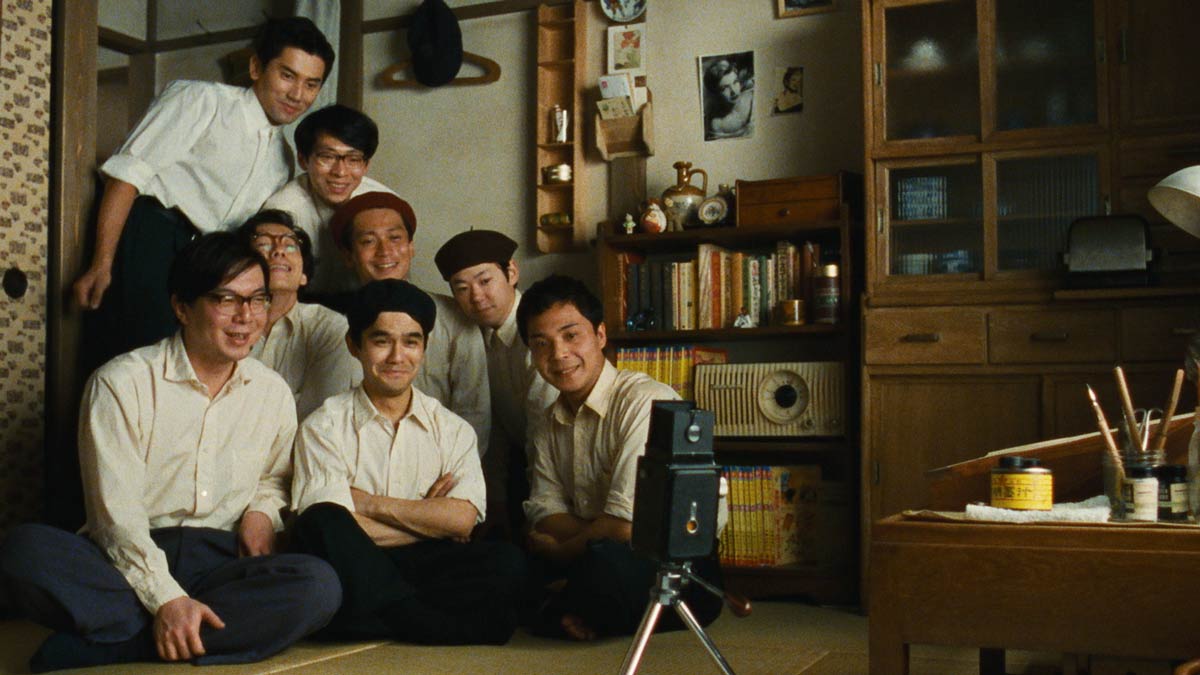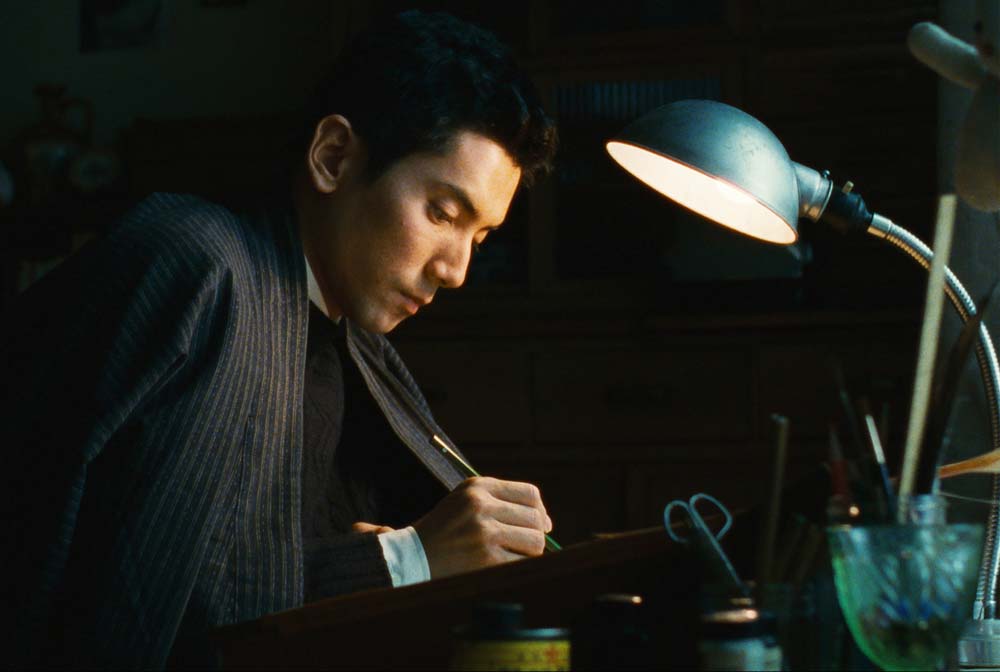
©1995/2020 Culture Entertainment Co., Ltd
"Tokiwa-so's Youth" The light and shadow of young manga artists drawn in a legendary apartment (Part 1/Planning part)
2021.02.12
Light and shadow of manga artist Hiroo Terada
Not all of the young manga artists who lived at Tokiwaso achieved their aspirations. While some like Fujiko, Akatsuka, and Ishinomori achieved great success, others like Naoya Moriyasu went out of business after leaving Tokiwaso and continued drawing manga as amateurs.
Hiroo Terada exists in a different position from the easy-to-understand contrast between success and failure. He had hit works such as `` Uniform Number 0 '' and ``Darkness 5th Dan'', and even after leaving Tokiwaso, he steadily progressed from monthly magazines to school year magazines to weekly magazines, and in 1960 he published `` Sportsman Kintaro ''. It won the 1st Kodansha Children's Manga Award.
However, at a certain point, he voluntarily distanced himself from manga and ended up not drawing much anymore. It is often said that he stopped writing in the early 1970s, but strictly speaking, after finishing serialization in the weekly manga magazine in 1968, it was only serialized in the monthly school year magazine, and the last time was in 1973. Because of this, it was often assumed that he had retired from the front line, but in fact, in 1976, he published ``Municipal Baseball Stadium Murder Case'' in ``Special Edition Manga Action'' and the book ``Professional Baseball 101 Secrets.'' He also illustrated ``The Secrets of 101 Popular Manga Houses'' and ``Children's Manga Classroom'' in 1978. However, since then, there has been no notable activity other than ``Manga Shonen History,'' which he planned and edited in 1981.
``At that moment, I have no choice but to draw what I want to draw most in the way I want to draw it, and if that doesn't work, I have no choice but to remain silent.'' (Estoria Quarterly No. 2)
Terada says this every time he is asked why he stopped writing, denying it and saying that he would be ready to draw if there was a good manga magazine like Manga Shonen. However, since he stopped drawing manga, even his former friends at Tokiwa-sou have worried that he has become weak, saying, ``I have almost no happy memories or interesting incidents from my time at Tokiwa-sou.'' (Ibid.) There are also quite a few negative words and actions. There is also a statement like this.
``People who only saw `` Manga Michi '' would probably buy into Terra-san as a character.If Fujiko-kun thought that he was very happy at that time when I did something extremely ordinary, he would have been so impressed that he would have been overjoyed. If you do that, you will think that Terra-san is a very friendly and caring person.'' (ibid.)
When you say something like that, there's nothing you can say in response. However, if you think about it, the majority of Tokiwaso Monogatari are memories fondly recalled by those who achieved success. Poverty and disappointment are now bright memories that I can look back on with ease.

“Tokiwa-so's Youth” ©1995/2020 Culture Entertainment Co., Ltd
In that sense, in an interview with ``Movie Diary'', which was produced as a part of the making of ``Tokiwa-so's Youth'', he grimaced and said, ``Everyone was miserable. I think they were able to stay because they were young. (Omitted) These are unpleasant, dark memories of Tokiwa-so...'' Naoya Moriyasu's words also bring out the shadows that were hidden from the traditional story of Tokiwa-so.
The deciding factor for Jun Ichikawa in choosing Terada as the main character was the book `` The Era of Tokiwa-sou: Hiroo Terada's Manga Path '' (Jun Kajii/Chikuma Shobo, Chikuma Bunko), which he discovered while combing through related materials. Based on long-term interviews with Terada, this is an outstanding book that depicts light and shadow that had not been seen in previous books related to Tokiwaso.
In the same book, when the author asks Terada which manga artist he was closest to during his time at Tokiwaso, he mentions Teruo Tanashita, not a member of the Shin Manga Party. Although he is a Burai-ha manga artist whose many works have been made into movies, including ``Mona Lisa in Kyoto,'' they have been friends since they were young, encouraging Terada to move to Tokyo, and their relationship continued even after Terada left Tokiwa-so.
Tanashita feels uncomfortable with the community called Tokiwaso. In the article he contributed to ``Manga Shonen History,'' he describes the manga artists he met at Tokiwaso as ``a guy like a potato'' and Fujiko Fujio as ``a loofah and eggplant.'' I can see that he doesn't have a good impression. Tanashita describes his impressions of Tokiwaso as follows.
``In all of these cases, there was an atmosphere that gave off the feeling that drawing manga was not considered a delinquent act.'' (ibid.)
When ``Tokiwa-so's Youth'' was later produced, Tanashita was interviewed by Ichikawa and said, ``Please don't make Tokiwaso into a type.'' In other words, they would like the film to include the discomfort that Tanashita felt, rather than the stereotypical depiction of young people. Ichikawa also wrote those words as ``a very correct opinion'' (Kinema Junpo, late April 1995 issue).
Another manga artist who felt similarly uncomfortable with Tokiwaso is Yoshiharu Tsuge. While working in the same environment as a factory worker, he met Fujio Akatsuka, who also drew manga, and has also visited Tokiwaso. Tsuge later testified about her impressions at that time as follows.
``Mr. Terada was very serious, like a school teacher.My impression was that he was quite taciturn and introverted.The people around him seemed a bit childish. It felt a little strange, bright and lively, or rather playful.'' (``Tokiwaso no Jidai'')
The sense of discomfort that Tanashita and Tsuge felt in Tokiwa-sou was something that was rarely mentioned in related books other than ``The Era of Tokiwa-sou.'' Jun Ichikawa chose this book as one of the original ideas for ``Tokiwa-so's Youth'' and included Yatsuge Tanashita in the play, but he did not explicitly portray this sense of discomfort. Rather, Terada is burdened with this sense of discomfort, and by portraying him as a young man with a dark side rather than as an older, dependable, cheerful person, he gives the impression that he is timid against the talented young manga artists. . In other words, it can be said that Terada's younger days were shaped by working backwards from Terada's later years, so if you watch it with the same impression as ``Manga Michi'', it will feel strange.
However, Terada himself did not only make negative comments as mentioned above when reminiscing about Tokiwaso. In the same interview, he also said:
"It wasn't all anxiety and pain...I laughed until I couldn't breathe, and now I can't even remember what was so funny, but I had so many wonderful friends by my side. Even if I didn't have money or spent money, I still had a lot of fun, and those are my ``tokiwa-sou'' in my heart.'' (``Estria'' Quarterly No. 2)
Anxiety, suffering, and the joy of being close to one's friends - depicting these twisted emotions in the atmosphere of the early 1950s and in a wooden apartment - that is the story of Tokiwaso that Jun Ichikawa sought to portray.
Continued to <Part 2/Photography>
Text: Guinea Pig Yoshida
Born in 1978. Movie critic. Another name is Ichiro Yoshida. He has written for ``Eiga Hiho'', ``Kinema Junpo'', ``Eiga Geijutsu'', ``Scenario'', etc. His books include ``Introduction to film criticism! ” (Yosensha), co-authored with “Film director Takeshi Kitano. ” (Film Art Company) and others

“Tokiwa-so's Youth Digital Remastered Version”
Released nationwide from Friday, February 12, 2021 at Theater Shinjuku, Cinelibre Ikebukuro, and others
©1995/2020 Culture Entertainment Co., Ltd

